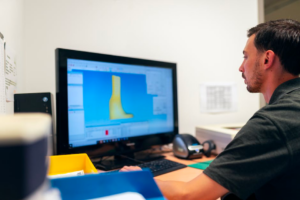
Asbestos, a naturally occurring mineral once lauded for its durability and resistance to heat, has left a legacy that demands our undivided attention. Its known association with serious health conditions such as mesothelioma and lung cancer underscores the critical need for awareness and vigilance, not just among occupational safety professionals but homeowners and environmental health advocates alike. We must understand that asbestos exposure can occur in diverse environments and through various means. Education and proactive measures are key to protecting health and preventing exposure risks, be they in the workplace, at home, or in public spaces.
Occupational Exposure
Those working in construction, shipyards, manufacturing, and other industries where asbestos-containing materials (ACMs) are commonly used are at an elevated risk. Safety professionals must ensure workers are informed about the presence of asbestos and are provided with appropriate personal protective equipment (PPE) and training on safe handling practices. For example, knowing what job sites in Boston with asbestos exposure look like and being able to identify potential asbestos-containing materials is crucial for preventing unnecessary exposure. Moreover, regular monitoring and proper disposal of asbestos-containing waste are crucial in minimizing potential health hazards.
Renovations or DIY Projects
Homeowners should exhibit caution — walls, insulation, and even flooring in older homes may contain asbestos. Before embarking on any renovation or DIY project, it is paramount to identify and assess the materials you will be disturbing. Professional testing and remediation are strongly recommended over personal attempts to remove asbestos, as improper handling can lead to airborne fibers and subsequent inhalation. Additionally, it is important to note that even newer homes may contain ACMs, as asbestos was not fully banned in the United States until 2003. Furthermore, it is critical to properly dispose of any debris or waste containing asbestos, as improper disposal can lead to environmental contamination and potential exposure risks for others.
Secondary Exposure
Secondary exposure, or take-home exposure, is another concern. When asbestos fibers hitch a ride on clothing, hair, or tools from a contaminated work environment to a worker’s home, families may be unknowingly exposed. Workers must follow decontamination procedures to minimize this risk. Additionally, employers must provide adequate laundry facilities and encourage the use of disposable work clothing to further reduce exposure. Awareness and education among family members are also crucial in preventing secondary asbestos exposure. If a loved one works in an industry at risk of asbestos exposure, take steps to protect yourself and your family.
Naturally Occurring Asbestos
In some regions, asbestos can occur naturally in rocks and soil. Activities such as gardening, biking, or hiking in contaminated areas can disturb the ground and release fibers into the air. Recognizing these regions and adhering to regional advisories and guidelines can help protect communities from unintentional exposure. As with any other form of asbestos exposure, education and precautionary measures are key in preventing potential health risks. By staying informed and vigilant, we can work towards reducing the impact of asbestos on our lives and environment. A lot of naturally occurring asbestos will be in the western portion of the United States, and exposure will occur in areas where there are natural asbestos deposits. However, it is important individuals across all regions need to be for individuals across all regions to be aware and cautious when visiting or residing in these areas.
Older Public Buildings
Asbestos is not just a concern in homes or industrial settings; older public buildings, including schools and government buildings, could contain this hazardous material. Routine inspections and risk assessments must be conducted to ensure the continued safety of the public. Appropriate containment and abatement strategies should be employed when ACMs are found. The responsibility to protect against asbestos exposure extends beyond the workplace and into public spaces, highlighting the need for education and proactive measures in all aspects of our lives. Furthermore, government agencies and officials must prioritize the safety of their citizens by properly managing and removing asbestos from public buildings.
Consumer Products
Though its use is heavily regulated, asbestos can still be found sporadically in consumer products. Staying informed and checking product warnings can help avoid inadvertent exposure. As consumers and advocates, we must also support policies that eliminate asbestos from all products. Through education, advocacy, and responsible consumer choices, we can work towards a future free from the dangers of asbestos. For instance, choosing asbestos-free alternatives when possible and supporting companies that prioritize safety and sustainability can make a difference in creating a safer environment for all. The fight against asbestos is ongoing, but with persistent awareness and action, we can protect ourselves and future generations from its harmful effects.
Understanding this pervasive risk is essential. As we move forward, let us advocate for comprehensive policies, accurate information dissemination, and preventive strategies to protect ourselves and future generations. Let this serve as a call to action to embrace vigilance and informed decision-making to mitigate asbestos exposure wherever it may lurk. Our collective efforts can build a foundation for a future where the dangers of asbestos are a memory rather than a current reality. Now is the time for action — for the safety of our workplaces, homes, and communities.



